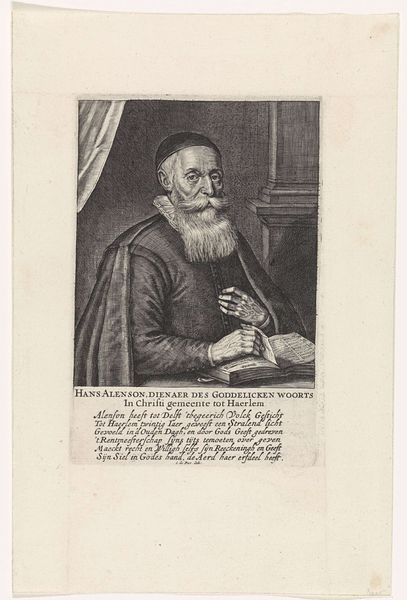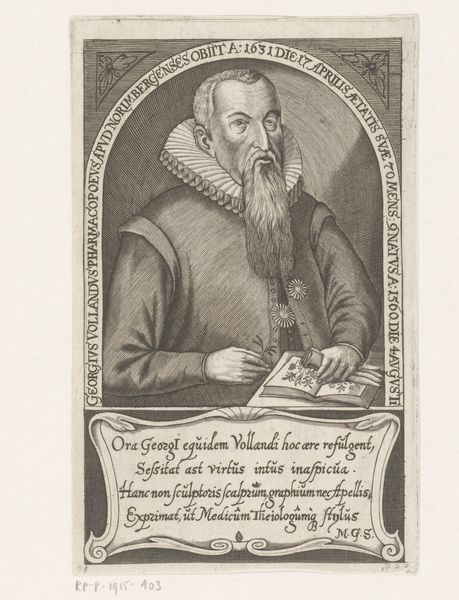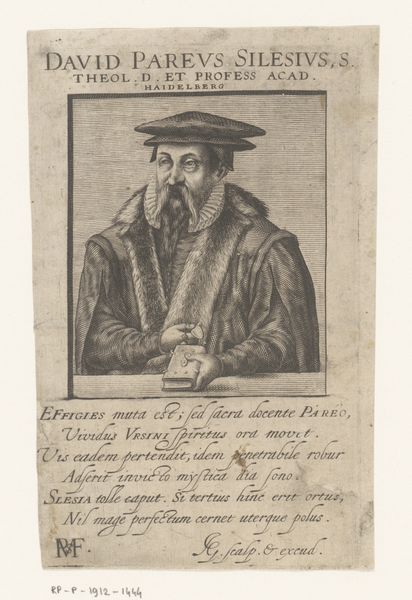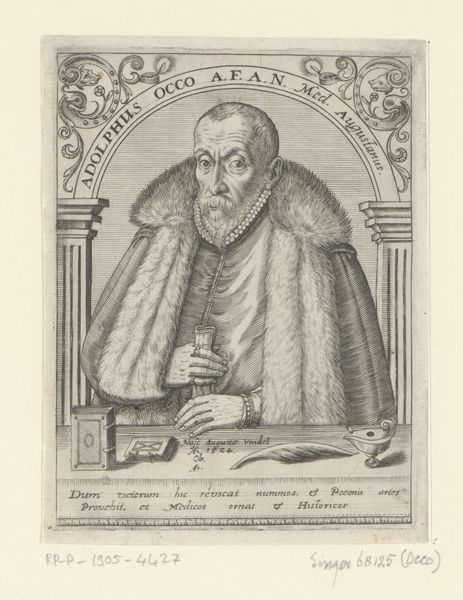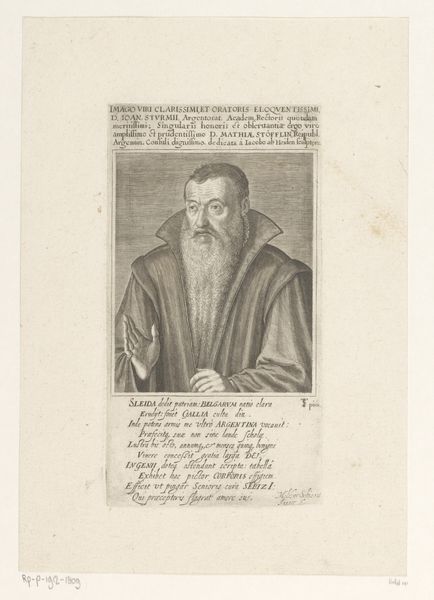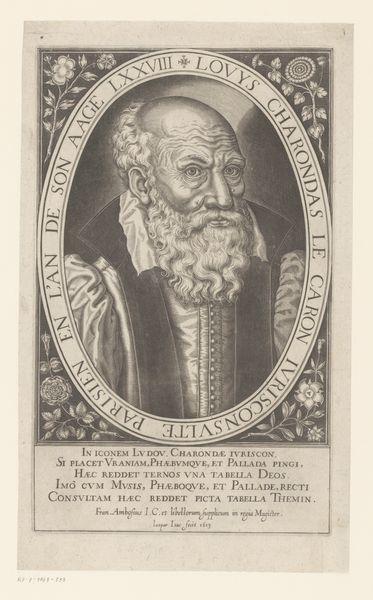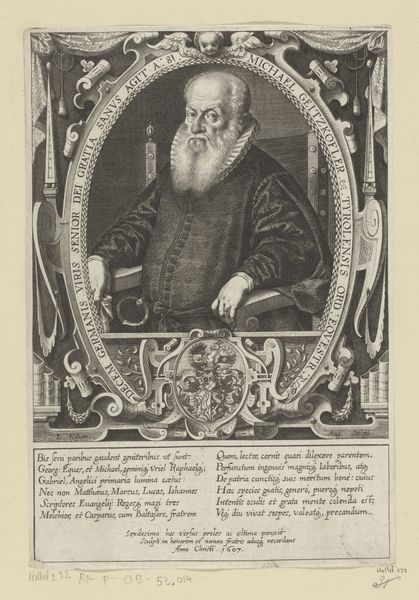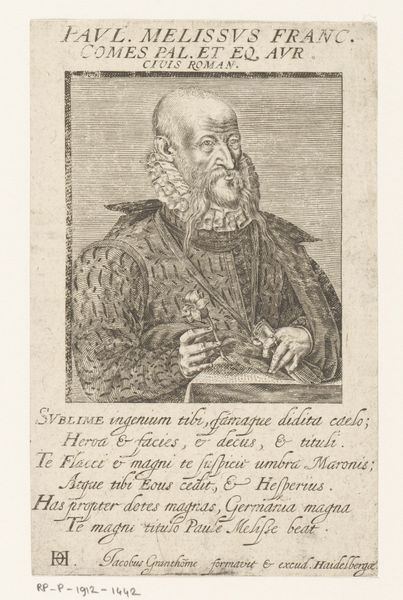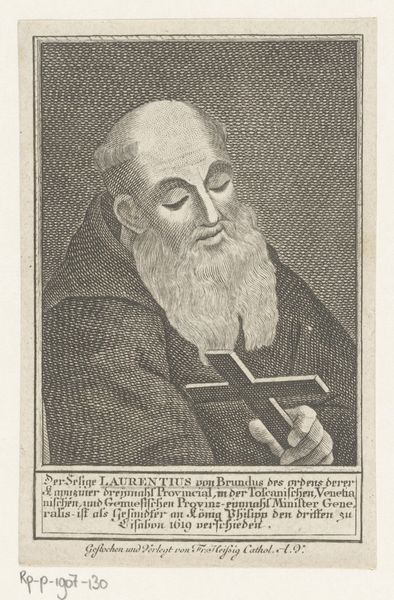
print, engraving
#
portrait
#
aged paper
#
light pencil work
#
baroque
# print
#
old engraving style
#
personal sketchbook
#
journal
#
old-timey
#
19th century
#
history-painting
#
engraving
Dimensions: height 190 mm, width 105 mm
Copyright: Rijks Museum: Open Domain
Curator: So, here we have a print, "Portret van Nikolaus Vigel" created in 1618 by Jacob van der Heyden. What strikes you most about it? Editor: Well, besides its age, the intricate detailing really stands out. It’s amazing that such fine lines can be achieved through engraving. I’m curious, though – how does this print, made through a rather mechanical process, fit into the art world of its time? Was printmaking considered "high art," or something else entirely? Curator: Excellent question! Focusing on the 'how' of it—the material conditions of production—is crucial. Prints like this existed in a fascinating space. The engraving process, requiring skilled labor and specific tools, walks a line between craft and art. Its purpose? Largely reproductive and disseminative. This image would have been circulated, copied, perhaps even altered over time. It becomes less about unique artistic genius and more about accessible visual information. Editor: So it’s more about the social impact and spread of knowledge? Curator: Precisely. Consider the materials – the paper, the ink, the copperplate – all commodities with their own histories and economies. Who had access to them? Who controlled the dissemination of these images? What messages were they spreading and to whom? Editor: That's interesting. I never considered the economics behind something like this before. The choice of materials and distribution network actually shaped what could be considered ‘art’. Curator: Exactly! By analyzing the materiality and mode of production, we gain insight into the social function and the possible challenges to traditional ideas surrounding artistic value in the Baroque Era. Editor: I see. By looking at it from that angle, it's not just a portrait but a piece of cultural history reflecting its era's economic and social structures. Thank you for making me see beyond just aesthetics and thinking about art’s production and circulation!
Comments
No comments
Be the first to comment and join the conversation on the ultimate creative platform.


